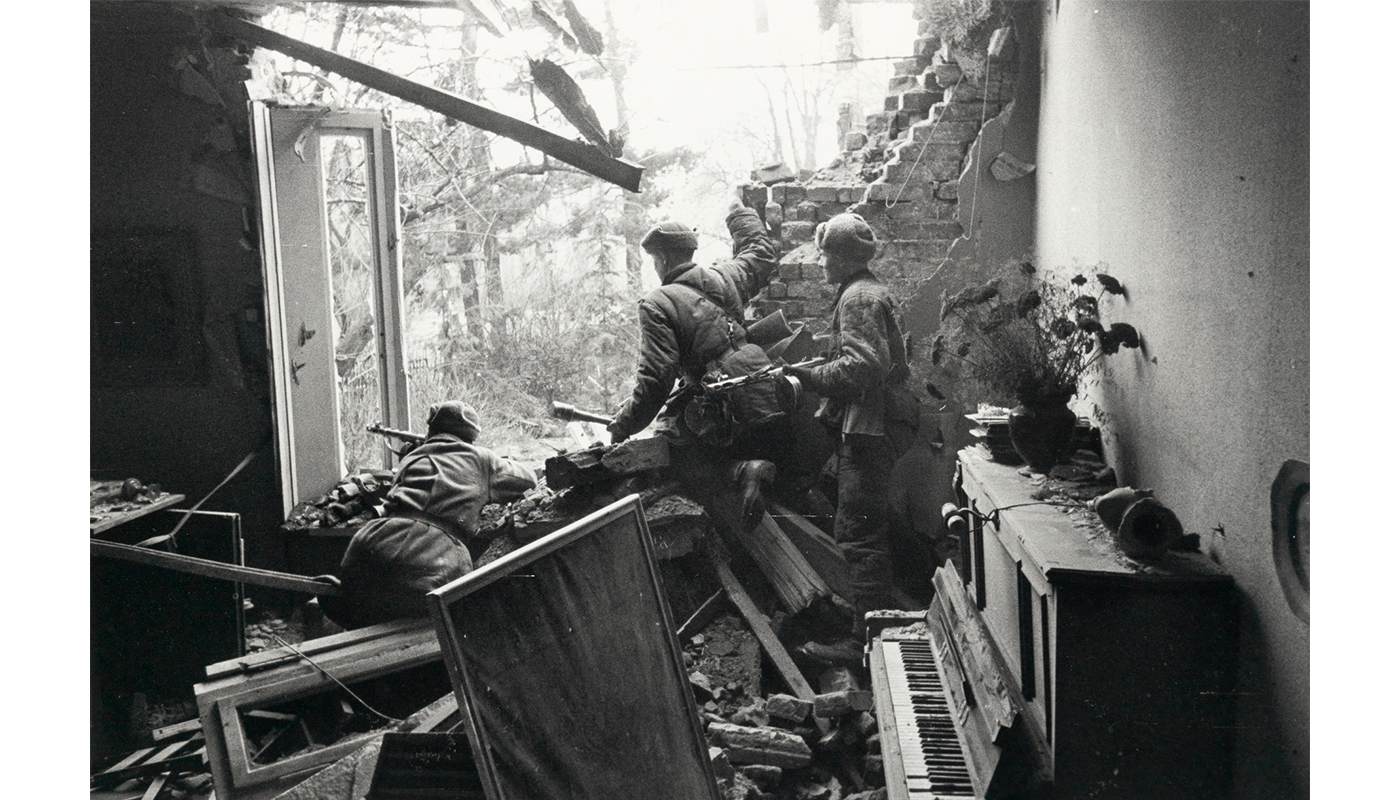
The Grief of Humanity: Dmitri Baltermants & World War II
Julie Warchol is the 2012-2013 Brown Post-Baccalaureate Curatorial Fellow in the Cunningham Center.
Soviet photographer Dmitri Baltermants (1912–1990) created unexpected beauty out of the conflict, destruction, grief, and loss experienced in World War II. Born in Warsaw, Poland, Baltermants’s family moved to Russia in 1915, where his father served as an officer in the Russian tsar’s army and was killed in World War I. Growing up during the Russian Revolution in a military family meant that Baltermants was unfortunately accustomed to living amongst turmoil and conflict, and perhaps this created a predisposed ability to confront the most intense moments in war. Although he intended to teach math in a military academy, Baltermants instead found a passion in photography. He began his career as a photojournalist in 1939, the year World War II began in Western Europe.
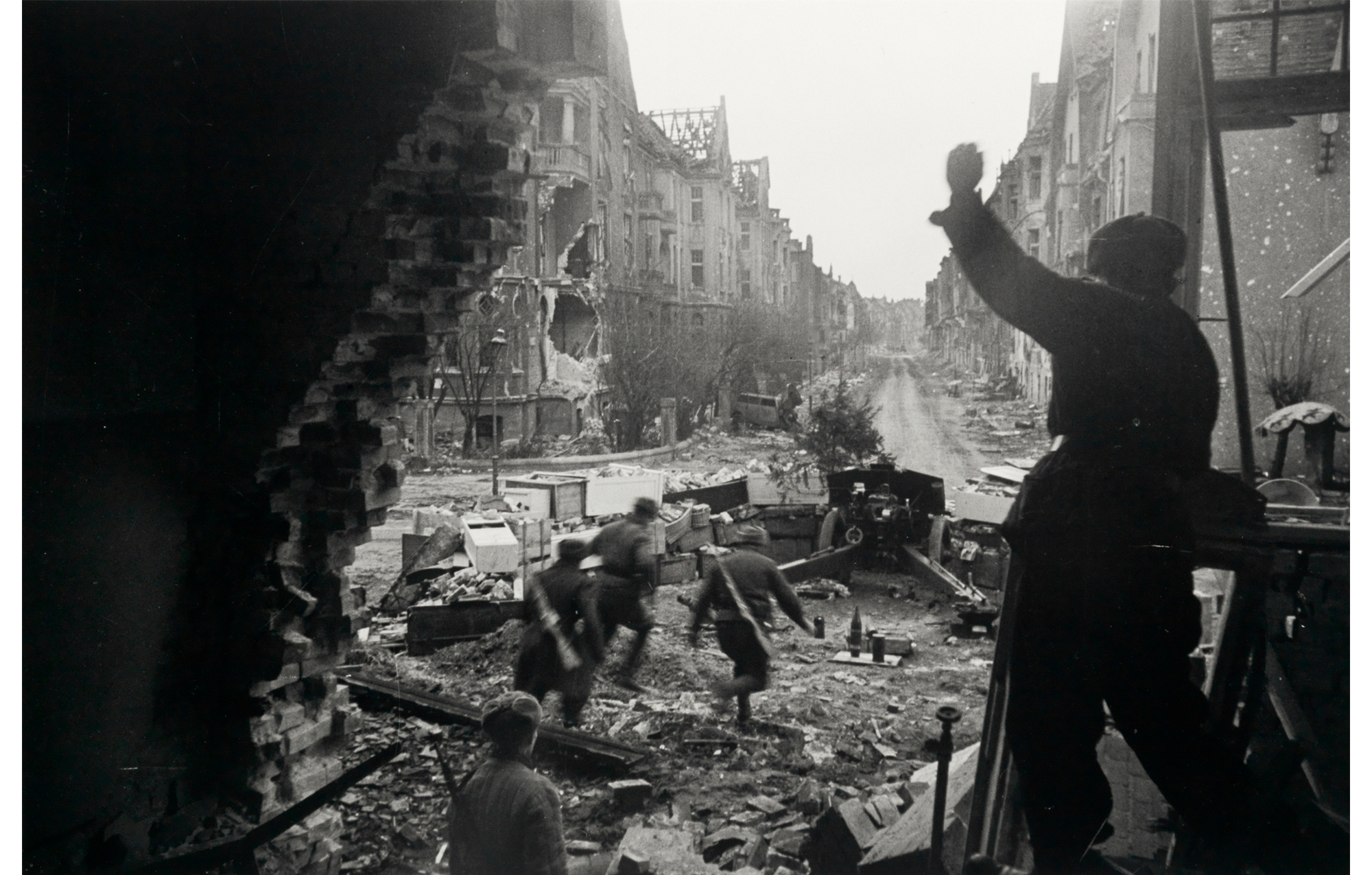
Dmitri Baltermants. Russian, 1912–1990. Battle on the Streets of Berlin, 1945; print 2003. Gelatin silver print. Gift of Nicole Moretti Ungar, class of 1982, and Jon Ungar. Photography by Petegorsky/Gipe.
It took another two years for war to spread to the Soviet Union. In 1941, the German-led forces launched “Operation Barbarossa,” in which 4 million Axis soldiers invaded the Soviet Union. Known to Soviets as “the Great Patriotic War” and to Germans as “the Eastern Front” (including Northern and Eastern Europe), it was the largest and most gruesome military struggle in history. While a majority of the deaths in World War II occurred on the Eastern Front, not all were in combat alone – many were due to starvation, the extremely harsh Russian winters, disease, etc. Civilian deaths in the war also reached catastrophic numbers in the Eastern Front, particularly in German-occupied areas (cities, towns, ghettos, and concentration camps). Baltermants was no stranger to these terrible conditions, having admitted that he lost many of his comrades in arms (both photographers and soliders) in these years. Yet the losses were terrible on both sides – the German military experienced 80% of its losses in Eastern Europe and the Soviet Union, which was a leading cause of the Allies’ victory in 1945.
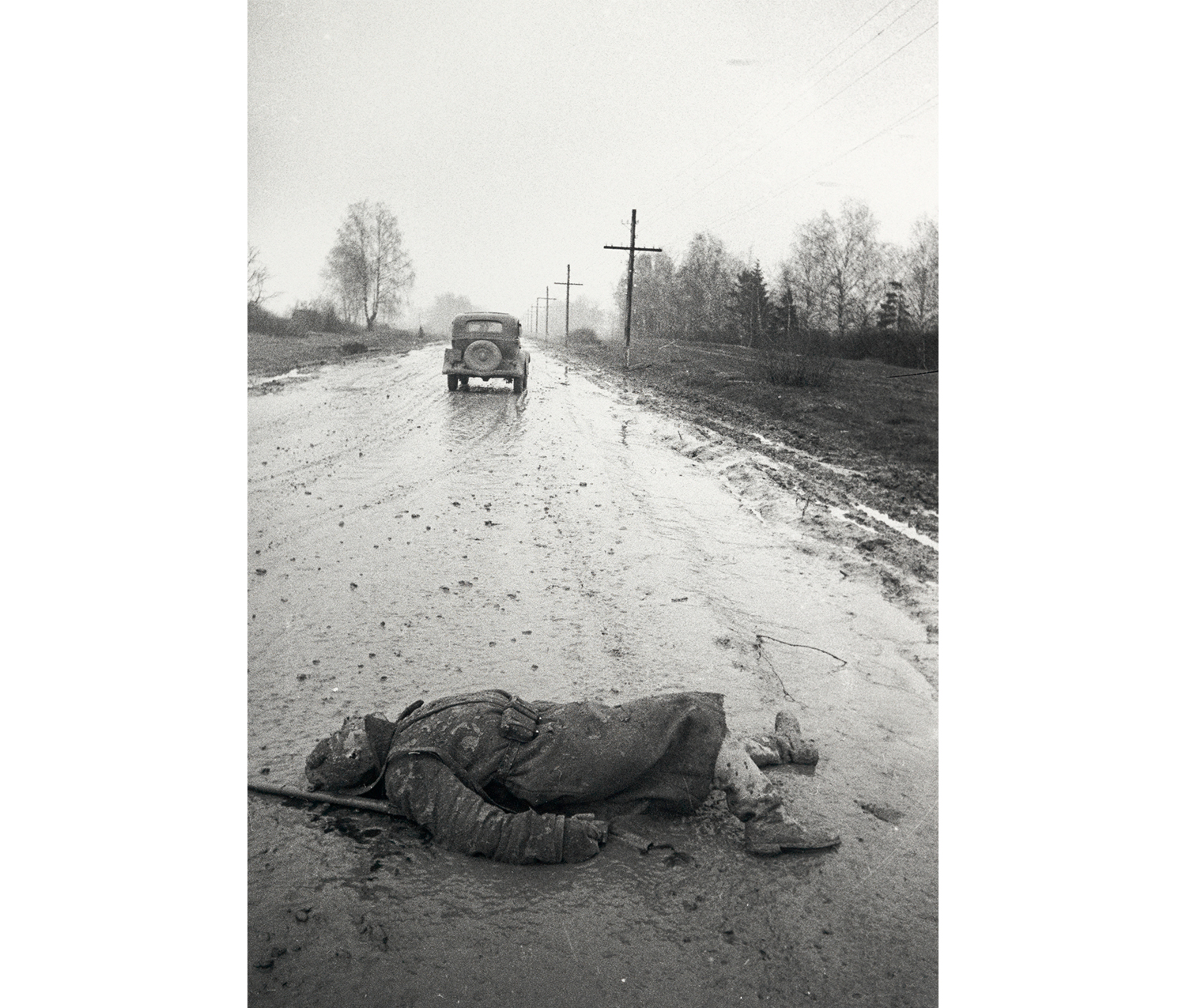
Dmitri Baltermants. Russian, 1912–1990. Soldier in the Road, Smolensk Front, 10 Minutes from Moscow, 1941; print 2003. Gelatin silver print. Gift of Nicole Moretti Ungar, class of 1982, and Jon Ungar. Photography by Petegorsky/Gipe.
From 1941 until Allied victory in 1945, Baltermants, like many of his contemporary Soviet war photojournalists, “fought armed only with [a] camera.” He was wounded twice and was lucky to escape with his life. Baltermants travelled in the Red Army, fearlessly photographing battles throughout the Soviet Union and the Ukraine, the Battle of Stalingrad, and the 1944 invasion of Berlin. He captured the Soviets’ riveting and proud moments in battle, quiet moments in the downtime between the fighting, as well as devastation of military and civilian deaths. During and after the war, many of these photographs were censored by Soviet propaganda officials, unable to be shown until the Khrushchev period of the 1960s. It was not until almost 20 years later that Baltermants publicly presented such images as a dead soldier left on a muddy road outside of Smolensk, where the Soviets lost their first major battle on the Eastern Front, or women pushing a cart of their dead husbands who were victims of a 1942 Nazi massacre of Jews in Kerch, Crimea.
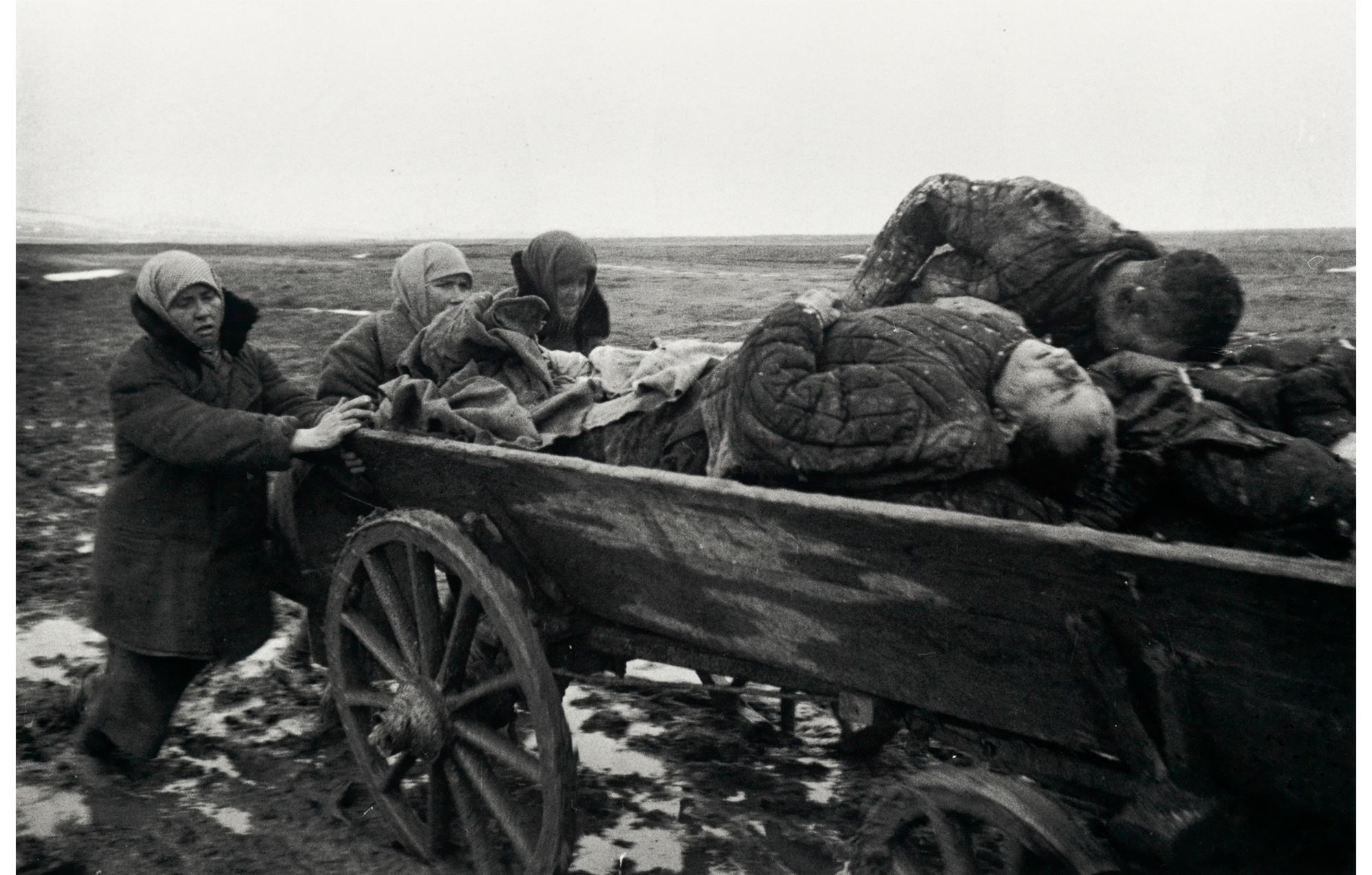
Dmitri Baltermants. Russian, 1912–1990. Carting the Dead, Kerch, Crimea, January 1943; print 2003. Gelatin silver print. Gift of Nicole Moretti Ungar, class of 1982, and Jon Ungar. Photography by Petegorsky/Gipe.
The same year the Berlin Wall fell, signaling the end of the Cold War, and a year before his death in 1990, Baltermants wrote in an interview for Aperture magazine: “We photographers make magnificent shots of wars, fires, earthquakes, and murder: the grief of humanity. We would like to see photographs about joy, happiness and love, but on the same level. I realize, though, that this is difficult.”
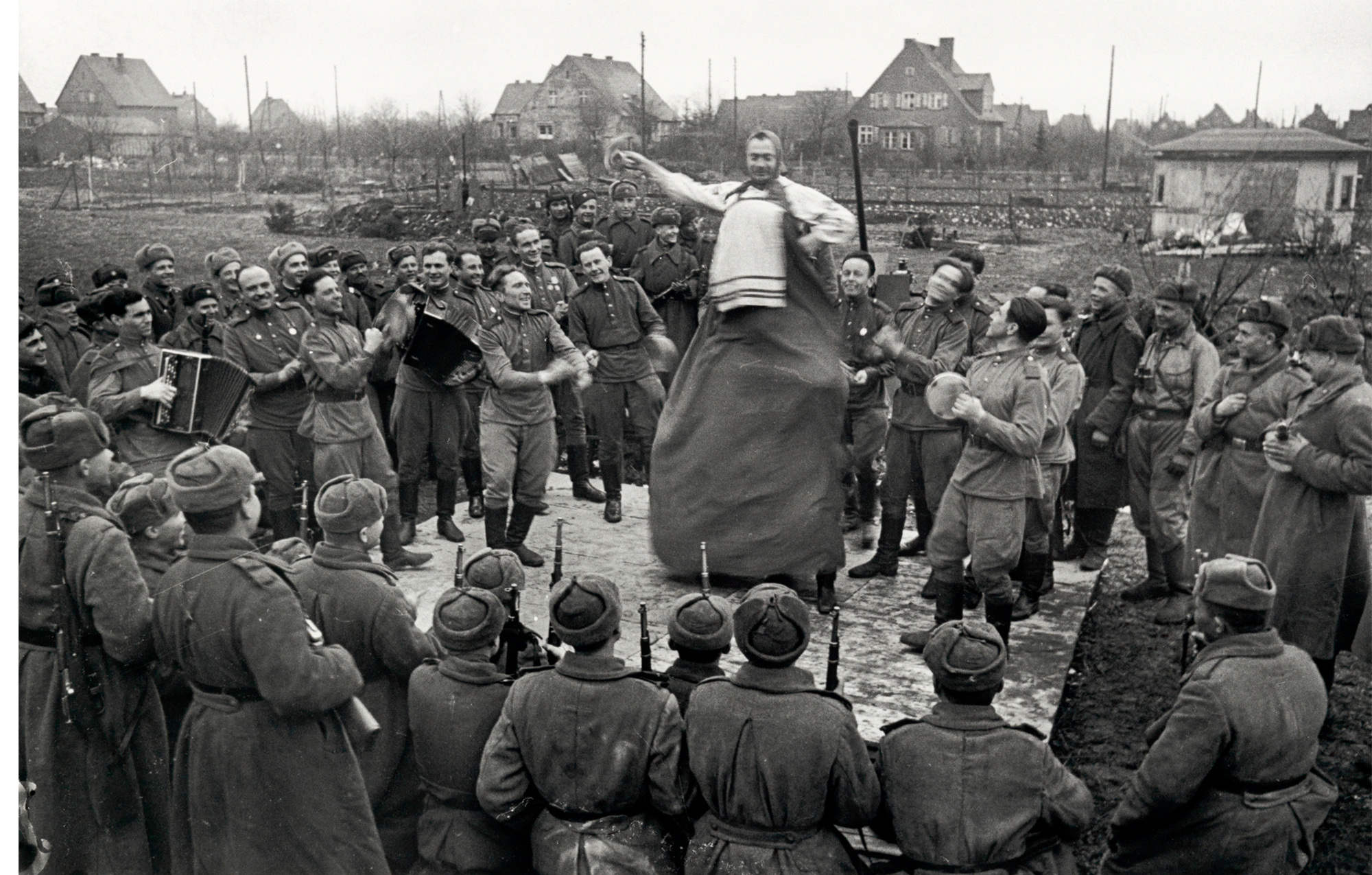
Dmitri Baltermants. Russian, 1912–1990. Entertaining the Troops, 1941–1945; print 2003. Gelatin silver print. Gift of Nicole Moretti Ungar, class of 1982, and Jon Ungar. Photography by Petegorsky/Gipe.
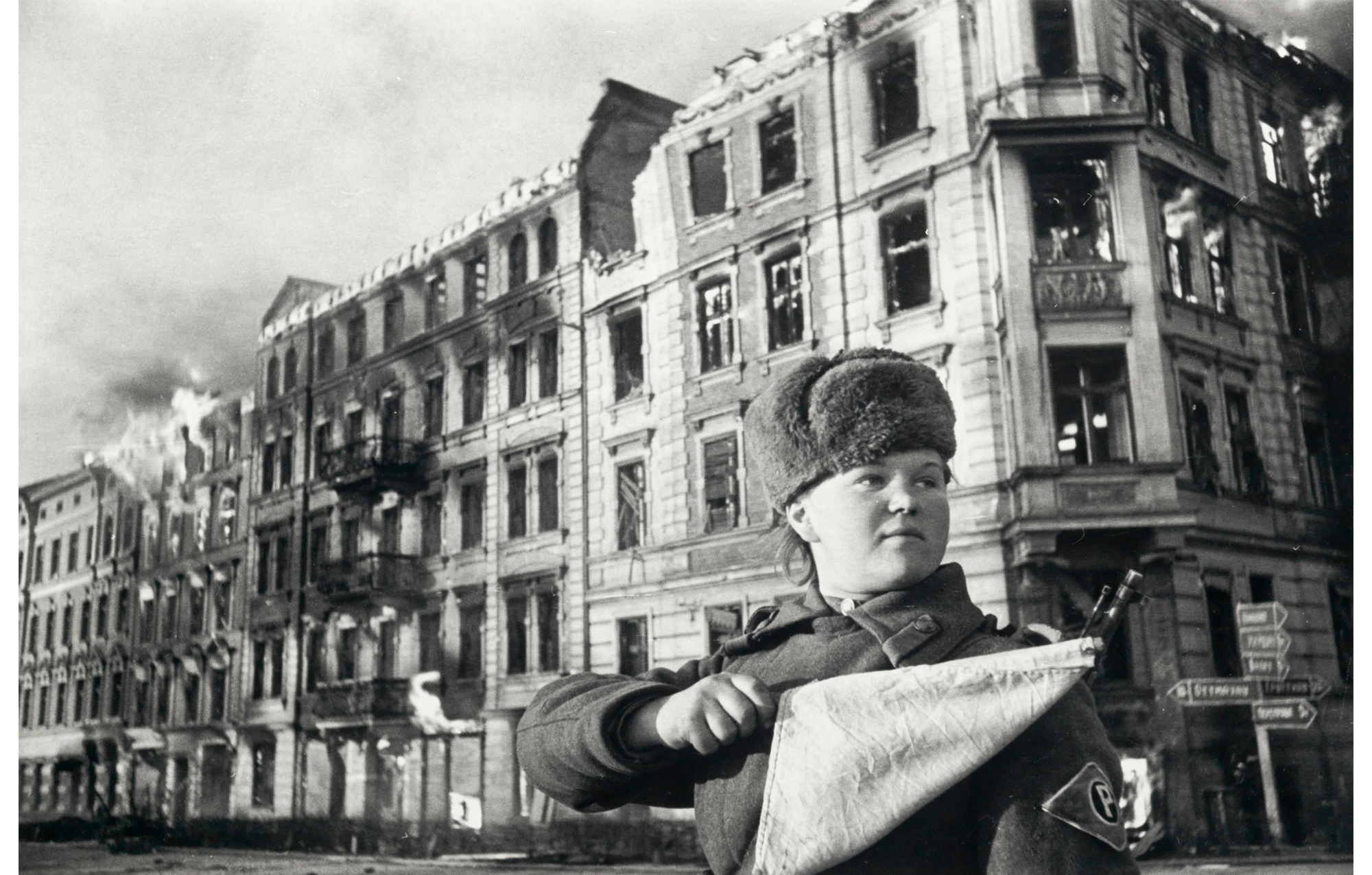
Dmitri Baltermants. Russian, 1912–1990. Soviet Policewoman Directing Traffic, Berlin, 1945; print 2003. Gelatin silver print. Gift of Nicole Moretti Ungar, class of 1982, and Jon Ungar. Photography by Petegorsky/Gipe.